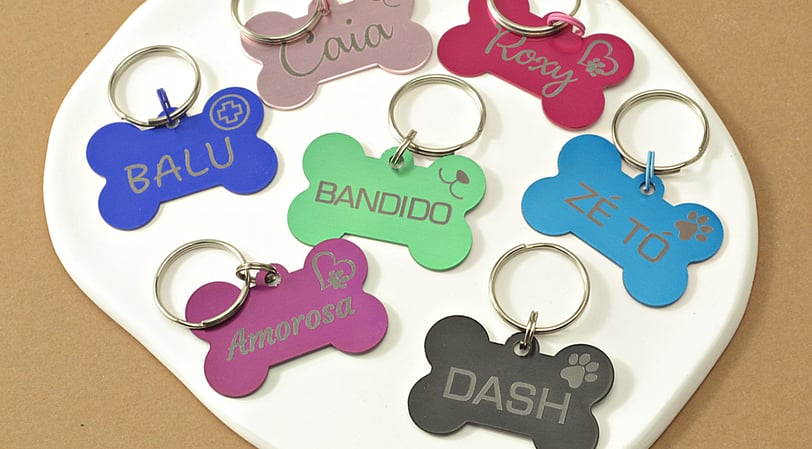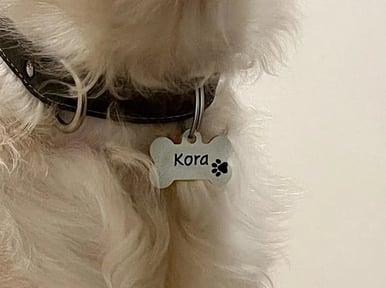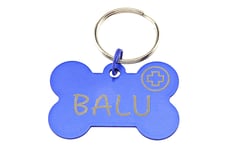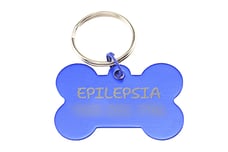What Should I Put on My Dog's Tag: Essential Information
A dog tag is more than just an accessory—it’s a lifeline for your furry friend. In the event your dog gets lost, a well-made tag with the right information can make all the difference in reuniting you quickly. But what exactly should you include on your dog’s tag? In this post, we’ll explore the essential details every dog tag should have, optional extras, and tips to keep the information effective and up-to-date.
11/29/20244 min read
The Importance of a Dog Tag
Having a dog tag is essential for the safety and identification of your pet. A dog tag serves as a crucial tool that aids in the quick and efficient reunification of lost pets with their owners. When a dog goes missing, the presence of a tag with up-to-date contact information increases the likelihood of being found by well-meaning individuals who encounter your pet. In many cases, a simple glance at the tag can lead to a swift phone call, alleviating the distress that comes with a lost animal.
The peace of mind that comes from knowing your dog has proper identification cannot be overstated. Dog tags not only serve their primary function of identification but also reflect the personality of your pet, contributing to a sense of belonging. Style contributes to this sense of identity, as tags come in various shapes, colors, and materials, enabling pet owners to personalize them to reflect their dog's unique nature. In a world where pets can easily wander off or get lost, equipping them with a durable and visible identification tag is a responsible and thoughtful step towards their safety.
Essential Information for Your Dog's Tag
When it comes to ensuring the safety and well-being of your dog, having a properly labeled tag is essential. A well-designed dog tag provides critical information that can be pivotal in reuniting you with your pet in case they wander off.
It is advisable to ensure that this number is up-to-date to facilitate instant communication should someone find your dog. Some owners also opt to include an alternative contact number, a neighbor’s or a friend’s number, in case they cannot be reached.
Another significant aspect to consider is including any medical information or special instructions. For instance, if your dog has allergies or requires medication, it is valuable to note this on the tag. A simple phrase like "Needs Medication" or "Allergic to Bees" can inform found persons about any urgent care your dog may need. Additionally, you might want to include a phrase indicating if your dog is friendly or shy, as this can help guide the actions of anyone who finds them.
While gathering this information, it is vital to keep in mind that the tag space is limited. Thus, conciseness is key. Prioritize the most crucial details to ensure that the text remains legible and the tag is aesthetically appealing. A well-crafted dog tag, equipped with essential information, not only enhances the chances of a safe return but also showcases your pet’s identity in a stylish manner.
Your dog’s tag is a small but critical tool for their safety. By including the right information and keeping it simple and legible, you can ensure that your furry friend has the best chance of finding their way back to you. Regularly check and update the tag, and pair it with a microchip for added security.
In conclusion, dog owners can find a vast selection of dog tags that combine style with essential information. By exploring various products online, you can ensure that your pet's tag not only serves a practical purpose but also reflects their unique personality.
A little preparation goes a long way in keeping your pet safe—so why not take a moment today to review your dog’s tag?
It’s a simple step that could make all the difference! Woof!

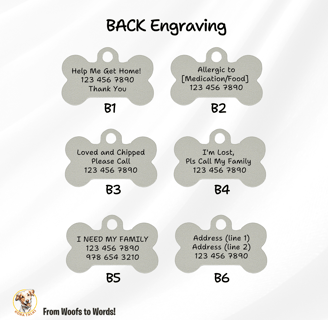
Beyond the emotional benefits, there are legal obligations concerning pet identification in various jurisdictions.
In some areas, the law mandates that pets wear identification tags, which may include not only the owner's contact information but also vaccination status or microchip details. Failing to comply with these regulations could result in fines or even the temporary loss of your pet to animal control.
Thus, having a dog tag is not just a practical measure; it is often a legal requirement that can prevent unnecessary complications.
The primary information to include on your dog’s tag should be the dog’s name, which is key to identification.
Choosing a clear, legible font will help with visibility, making it easy for anyone to read your pet's name at a glance.
In addition to your dog's name, it is crucial to include your contact information. This typically consists of a phone number, which can be a mobile number for immediate reachability.
The Essentials
Your Dog's Name: Helps strangers approach your pet calmly.
Your Phone Number(s): A primary and, if possible, secondary number to ensure someone can reach you.
Your Address or City: Helpful for local rescues or neighbors.
Optional Information
Medical Needs: If your dog has allergies or a condition, include a brief note like "Needs Medication."
Reward Offer: Some owners like to motivate finders by adding "Reward If Found."
Microchip ID Number: A microchip is great, but pairing it with a tag improves chances of recovery.
What to Avoid
Overloading the Tag: Too much information can make it hard to read.
Outdated Details: Always update tags if you move or change numbers.

